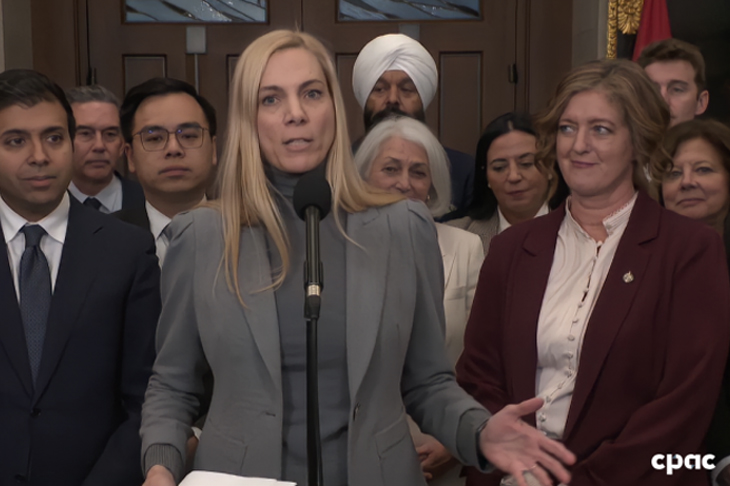By Denis Carmel
OTTAWA – When Heritage Minister Steven Guilbeault tabled Bill C-10 in November 2020, his department issued a Q&A which stated: “As the independent regulator, the CRTC will determine whether and how broadcasting services with differing characteristics are required to contribute, and the form of these contributions.
“If the CRTC requires online broadcasters to contribute to Canadian content at a similar rate to traditional broadcasters, online broadcasters’ contributions to Canadian music and stories could amount to as much as $830 million per year by 2023.”
Members of the Standing Committee on Canadian Heritage (CHPC), during a meeting held on November 5, 2020, asked the Minister where that number came from and he said he would provide the information. Then on December 7, the same members of the same Committee having not received the information, voted a unanimous motion to get the Minister to table the reasoning behind that number.
Then, on January 29, the same members asked the same minister, the same question and he gave the same answer… and turned to his public servants. The Deputy Minister, Hélène Laurendeau said, in French: “We have nothing to hide on how we developed the model to arrive at that result. But I think it would be useful for the committee that this would be accompanied by a verbal explanation. A transfer of documents, without any explanation could be confusing, therefore, with the permission of the committee, I think we could provide the documentation with clear explanations, as we have done in some technical briefings.”
Cartt.ca has been trying to get to the bottom of this number, too, and wrote the Media Relation Unit at Canadian Heritage who gave this explanation: “Canadian Heritage projects that contributions by online broadcasters (for all types of online broadcasters we consider likely to be subject to the Act, including audio and audiovisual) to Canadian content and creators could reach $830 million annually. This $830 million estimate assumes that the CRTC would impose requirements on online broadcasters similar to those currently imposed on conventional broadcasters and is based on (the Department’s) estimates of online broadcasters’ revenues. It is important to note that this figure is illustrative and based on currently available data.
“The estimate assumes a ‘Canadian programming expenditure requirement’ at a rate of 30% of revenues for services that are in the business of commissioning and acquiring content. An expenditure requirement is an obligation that a percentage of revenues earned in the Canadian market must be spent on the production, licensing and exhibition of Canadian content. We expect that expenditure requirements will constitute the vast majority of the $830 million in estimated contributions,” the Heritage email went on.
“The calculation also assumes that online broadcasting services that are not in the business of commissioning and acquiring content (e.g., distribution services) will contribute a percentage of their annual revenues to production funds (e.g., Certified Independent Production Funds, the Canada Media Fund, and the Canadian Content Development model) at rates historically set by the CRTC,” it concluded.
We wrote back to get more clarification, but with we have so far, we tried reverse engineer this to get to $830 million.
We looked at publicly available figures, assuming Heritage used 2018 numbers. For example in the CRTC Communications Monitoring Report 2019 at figure 4.1 on Internet-based audio and television services (IBATS) estimated revenues the total revenues for video services were $4.328 billion and audio services were $423 million. We decided to remove the TV VOD and download portions, since they are not regulated. We therefore arrive at $3.833 billion in video revenues and $344 million for audio. A total of $4.177 billion.
Heritage seems to say that an internet broadcaster could be a distribution service as well as a TV service and could be asked to contribute in two ways: once for its “broadcasting” side at a 30% contribution rate, and 5% for distribution services. Netflix can be seen as both, for example. For, audio we have applied the 5% used for satellite radio.
For the those who broadcast and distribute over the internet, we apportioned arbitrarily at 60%/40% to arrive at $830 million.
For broadcasting at the 30% rate, it’s $698 million; for distribution at 5%, it comes to $77 million and for audio at 5%, $17 million. Our total is $783 million, to which we apply a 10% annual growth rate, which is way too conservative for five years and we get to $860 million. Close enough
More details from Heritage are needed (which will hopefully come during the committee work) and of course, the CRTC will have the final word on how dollars are divided so the department is only guessing what the Commission might do. And of course all of this assumes Bill C-10 is passed in some form.
As noted American philosopher Yogi Berra once said: “It’s tough to make predictions, especially about the future.”









